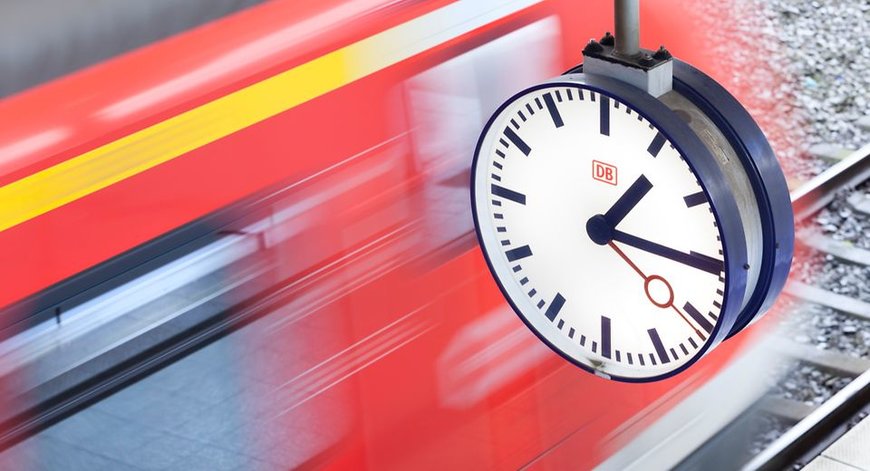railway-international.com
26
'20
Written on Modified on
Internet of Things
When elevators, locomotives and clocks learn to speak

It all started with ADAM
B currently uses sensors primarily for railroad installation maintenance. One of DB's first IoT projects was ADAM with the aim of expanding digitalization in facility management. In 2016 DB equipped all elevators and escalators with a communication module for remote monitoring. The module constantly records the condition of elevators and escalators and sends this information to the operations center. Any faults are immediately apparent, which means that malfunctions can be fixed more quickly. In the first half-year 2019, the availability rate of elevators and escalators was roughly 97% nationwide as a result of the project.
Identifying, sending and analyzing data of all kinds
Think of a set of condition data, and there is likely a sensor that can detect it – from visual sensors to weight and gravity sensors. But the information that sensors can provide is only helpful if it gets to where it needs to go quickly so it can be analyzed. This is where DB benefits from increasingly powerful communication networks, which enable faster and higher-performing data transfer. DB Systel has developed DB's IoT Cloud, a single IoT platform that provides access to information that is sent. Functions can be customized and enhanced as needed.
Keeping locomotives and freight cars moving and clocks ticking
DB Cargo is one of the organizations using the DB IoT Cloud, which processes data on the condition of locomotives and freight cards recorded by sensors. Two thousand locomotives and the entire fleet of some 70,000 freight cars will be equipped with sensors by 2020.
LoRaWAN wireless communication technology has a long range of over ten kilometers, which makes it especially good for IoT applications. And it uses less energy than other technologies, too. Station clocks are one example of where LoRaWAN is used.
Lunch-box-size satellites
In October 2018, DB acquired an interest in Kepler Communications, a Canadian startup that is aiming to use a satellite network to make the Internet of Things available around the world without cell phone towers, across national borders and without roaming agreements. Kepler plans to launch 140 small satellites, which are about the size of a lunch box, into low earth orbit. The satellites will enable global positioning and allow transmission of data, such as information about the condition of freight being transported through multiple countries by train or truck. Beginning in 2022, in combination with Kepler's ground stations, the satellites will allow containers that are in transport to communicate in real time via sensors. And for logistics customers, that means higher quality throughout the entire supply chain and seamless consignment tracking in global trade.
www.deutschebahn.com

